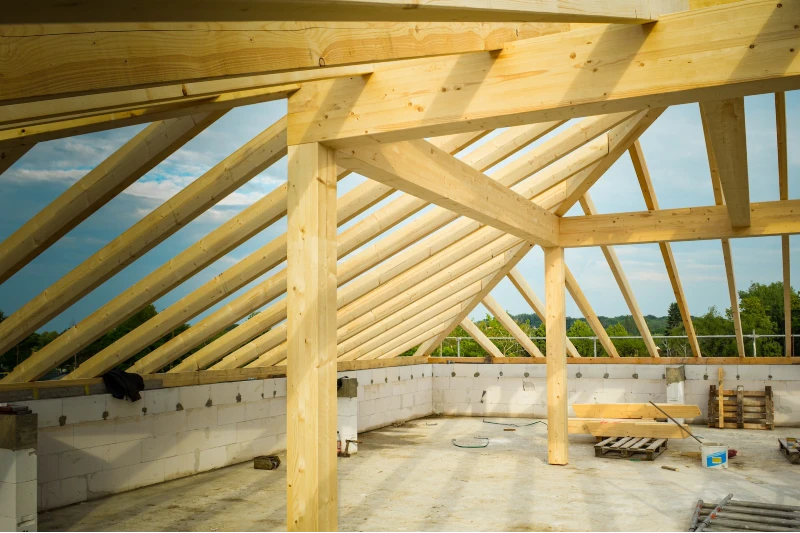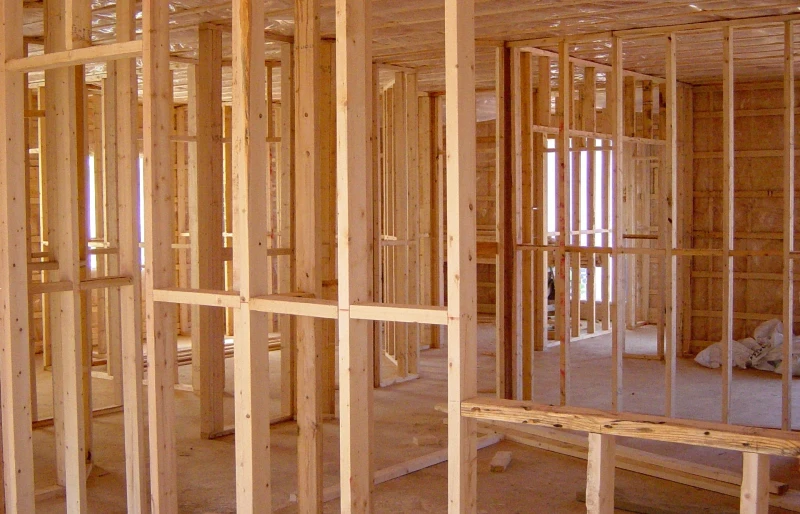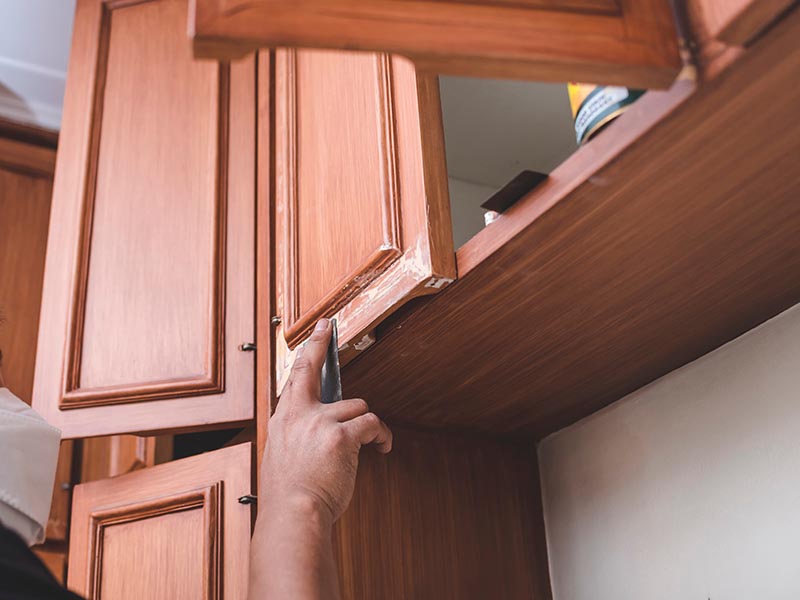Rough Carpentry vs Finish Carpentry: How Are They Different
-

- Last updated:

Rough carpentry and finish carpentry are both types of carpentry typically involved in the house building and refurbishment processes. Both require working with wood, but whereas rough carpentry is involved in the initial process of constructing framework, stud walls, and joists for a construction, finish carpentry involves the creation and installation of finishes like baseboards, architrave, and even the kitchen.
The skills required are very similar, but finish carpentry requires greater precision and attention to detail, and it usually requires more experience to become a finish carpenter than it does a rough carpenter. Trim carpentry also offers a higher salary than rough carpentry.

At a Glance

| Rough Carpentry | Finish Carpentry |
| Typically involved in early construction work, more concerned with functionality and practicality | Involved in the finishing of property after initial construction, deals with aesthetics rather than structure |
Overview of Rough Carpentry:

Most buildings are made with a timber frame. It is the job of rough carpenters, typically employed by construction companies, to put these frames up and ensure that they meet blueprint requirements. The work is manual and completed primarily on-site, although wood may need to be cut away from the worksite before being shipped in.
Although the rough carpenter does work primarily with wood, they may also work with other materials including concrete or steel to help ensure the successful completion of the initial construction.
When Is It Used?
Rough carpentry is primarily used in the early stages of a building’s construction, they may also be required to work on extensions and some refurbishment jobs. Although rough carpenters may be self-employed, many are employed by the construction companies responsible for putting up the building in the first place. And, except where the homeowner or property owner is the project manager, they will rarely deal directly with the rough carpenter.
What Do Rough Carpenters Make?
Rough carpenters are responsible for making the entire timber frame of a building, from the joists under the floor to the rafters of the roof. Some of the items include:
- Joists – Joists are the wooden beams that support levels of the building including floors and roofs. Although usually made of wood, joists can be concrete or concrete reinforced.
- Rafters – Rafters are sloped beams that support the roof and run from the wall to the eaves. They support the weight of the roof including tiles and stacks.
- Studs – Studs are vertical pieces of wood that are used to create partitions and walls of the building. Usually made of timber, studs come in various lengths.
- Subflooring – Subflooring is a wooden frame that sits under and supports the weight of the floor and everything that is supported by the floor itself.

Skills Required
Rough carpenters must possess certain skills to ensure the structural integrity of the building frame. Any errors or mistakes can cause serious problems with the main structure of the finished building.
- Blueprints – Rough carpenters must work with and adhere to blueprints provided by architects. Measurements must be accurate and reliable, and the carpenter not only needs to know how to read blueprints but to understand how they translate to the real world.
- Health and Safety – Health and safety are paramount to the rough carpenter’s role. They need to check the quality and integrity of materials, ensure that health and safety regulations are met, and maintain a high level of safety throughout the process. Health and safety are an integral part of carpentry training.
- Communication – The rough carpenter needs to relay information between architects, other professionals on site, and potentially even the property owner, throughout the process.
- Flexibility – Different buildings and different rough carpentry jobs can have very different requirements, and the rough carpenter needs to be able to adapt to be able to successfully complete each of these jobs.
- Erects the framework of the building
- Deals with blueprints and architectural drawings
- Communicates with everyone from architects to skilled professionals and project managers
- Not responsible for carpentry like cabinetry or kitchens

Overview of Finish Carpentry:

Whereas rough carpentry comes into play to build the framework of a structure, finish carpenters work once the framework is up, to complete the carpentry that will be on display when the property is complete. Finish carpenters are considered the artisans of the carpentry profession and typically have to gain several years of experience beyond their apprenticeship before being considered for a finishing or trim carpentry role.
When Is It Used?
Finish carpentry is used once the framework, or the structure of the building is complete. Finish carpenters are also frequently used in refurbishments, extensions, and repair work on an existing property, as well as in the construction of both residential and commercial properties.
What Do Finish Carpenters Make?
Once the framework and walls are in place, finish carpenters start their work completing the aesthetic carpentry of the building. Some of the items they make include:
- Trim – The molding that you see around doors, windows, and even in the alcoves and ceilings has been made by a finish carpenter. Lines need to be crisp and accurate to ensure the best-looking finish possible.
- Baseboards – Baseboards go around the bottom of the walls. They are functional but they also provide a clean finish that hides the edges of carpets and the potentially jagged lines of flooring and walls.
- Cabinets – While the majority of furniture and units are now mass-produced, some finish carpenters work in designing and manufacturing bespoke pieces of cabinetry for home and shop owners.
- Flooring – Real wood flooring can add a luxurious finishing touch to any room in any building, and it is the responsibility of a finishing carpenter to ensure that the flooring is functional but also that it looks great and is appealing to the owner.

Skills Required
Like any carpenter, a finish carpenter needs to be proficient in using certain tools, including hand tools and power tools. They also need the following skills:
- Blueprints and Designs – The finish carpenter needs to work with highly detailed drawings and blueprints to deliver exactly the design required. They can also advise on the best materials and some design elements to help ensure the best results.
- Communication – Many finish carpenters are self-employed, which means dealing with construction companies and homeowners, as well as architects and designers. Good communication minimizes mistakes and ensures speedy delivery of exactly what is required.
- Precision – Even more so than rough carpenters finish carpenters need to take and use precision measurements. They must also have an eye for detail and ensure that the finish of a room is the best it can be. Finishing carpentry is primarily aesthetic, so it has to look good.
- An eye for detail ensures the best finish
- Accurate and reliable measurements and work
- Deals with aesthetic finishes, although finishing work must also be functional
- Often years of study required

Conclusion
Rough carpentry and finish carpentry are equally important to the construction of a property, whether it is a residential or commercial property. Whereas the rough carpenter is responsible for creating the framework, or skeleton, of the property, it is the job of the finishing carpenter, or trim carpenter, to make and install trim and other woodwork to ensure the best aesthetic finish.
Featured Image Credit: Left – Rough Carpentry (Virrage Images, Shutterstock) | Right – Finish Carpentry (ungvar, Shutterstock)
Contents

